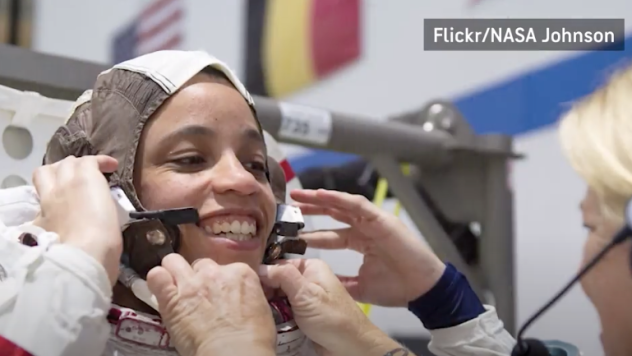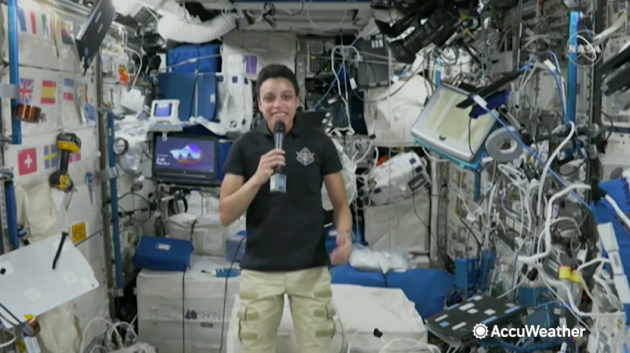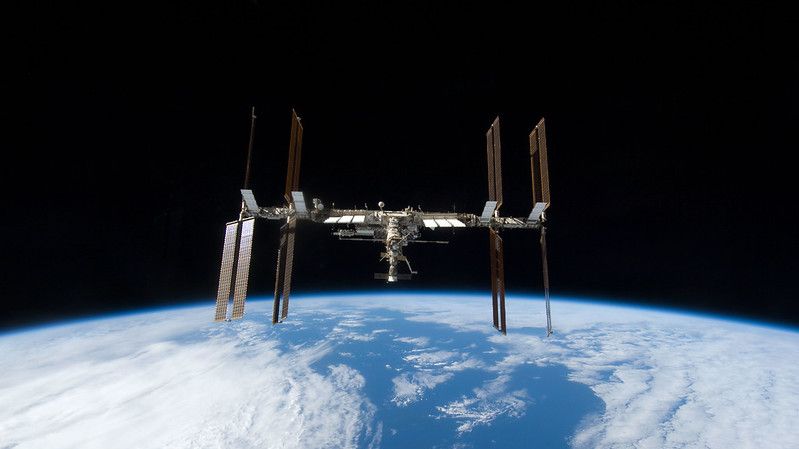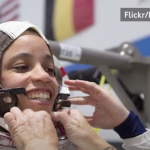
By John Murphy
NASA astronaut Jessica Watkins made history last month when she became the first Black woman to live and work on the International Space Station.
Late last year, NASA announced Watkins would be assigned to the SpaceX Crew-4 mission to space. She was first selected as an astronaut by NASA in 2017.
On a recent edition of AccuWeather Prime, Watkins told AccuWeather’s Adam Del Rosso that she was honored to be part of the “long legacy of Black astronauts who have come before me.”
“It is an important tribute” to that legacy “as well as a testament to the exciting future ahead,” Watkins said.
Watkins grew up in Lafayette, Colorado, located about 22 miles north of Denver, and developed a passion for space at a young age. She told Del Rosso her interest in being an astronaut began at nine or 10.
“This has been a dream of mine for a pretty long time … I never really thought that it would happen. Just so lucky and blessed and honored to be here today,” Watkins told Del Rosso.

Watkins earned a B.A. in geological and environmental sciences at Stanford University. She then earned a doctorate in geology from the University of California, Los Angeles, according to NASA.
At UCLA, her graduate research project consisted of researching the emplacement mechanisms of large landslides on Mars and Earth. Watkins’ first experience with NASA occurred as an intern working at the Ames Research Center in California in addition to NASA’s Jet Propulsion Laboratory.
The crew of SpaceX Crew-4 had to endure frequent training to be ready to perform tasks while in space.
But it wasn’t just physical training the team had to undergo.
“Lots of our other training involves systems and equipment, as well. So we learn about the systems of the International Space Station, where we are now, as well as the outside of the space station. Doing extra vehicular activity training or spacewalk training in addition to our training on the SpaceX Dragon Vehicle,” said Watkins.
The SpaceX Dragon Vehicle was the vehicle that brought Crew-4 to the ISS, and it will also be responsible for bringing the crew back to Earth.
Watkins, along with mission Commanders Robert Hines and European Space Agency astronaut Samantha Cristoforetti, launched in the ISS on April 27 from the Kennedy Space Center in Cape Canaveral, Florida.
The six-month mission involves conducting research on materials science, which concerns the properties of matter, health technologies and plant science. The work will prepare for human exploration beyond low-Earth orbit, according to NASA. More than 200 science experiments and technology demonstrations will take place over the course of the mission.
“Being able to see the Earth from the perspective that the ISS offers, it’s just unique and really a very cool opportunity for a geologist like me. I enjoyed being able to look out at the features we can see on Earth and, in particular, being able to apply those to planetary processes,” said Watkins.
While inside the ISS, Watkins said the crew is able to use Earth as an analog for what is seen on other planets. The information can also be used to learn more about Earth.

In addition to its research goals, the crew also has to maintain physical health throughout the mission while aboard the ISS. The crew members use exercise equipment every day to help maintain their health and bone mass.
“The effects on microgravity on the human body can be significant. So we have these countermeasures in place,” said Watkins.
The SpaceX Dragon Vehicle is expected to bring the astronauts from SpaceX Crew-4 back to Earth in September. The successor to that crew, SpaceX Crew-5, is expected to launch that same month.
Produced in association with AccuWeather.
Recommended from our partners
The post Dream Achieved: NASA Astronaut Jessica Watkins Boards The International Space Station appeared first on Zenger News.










